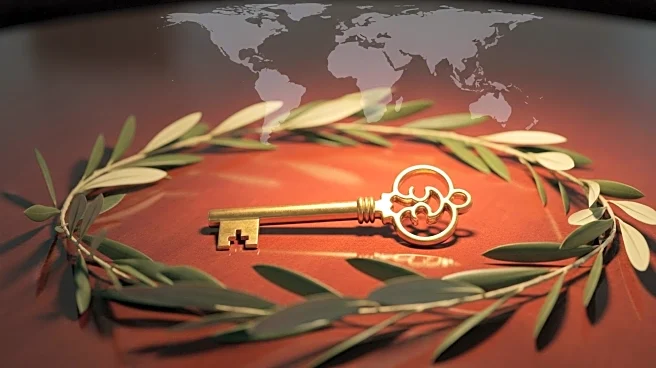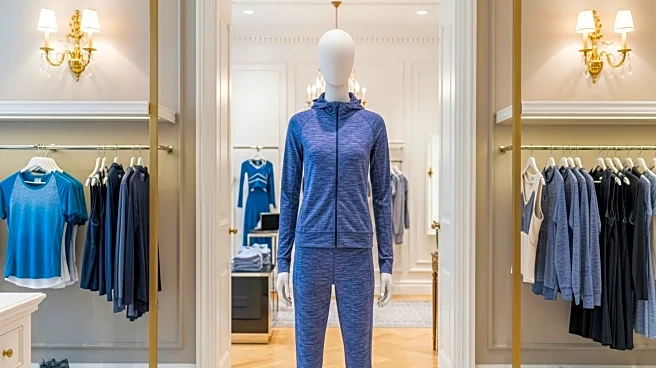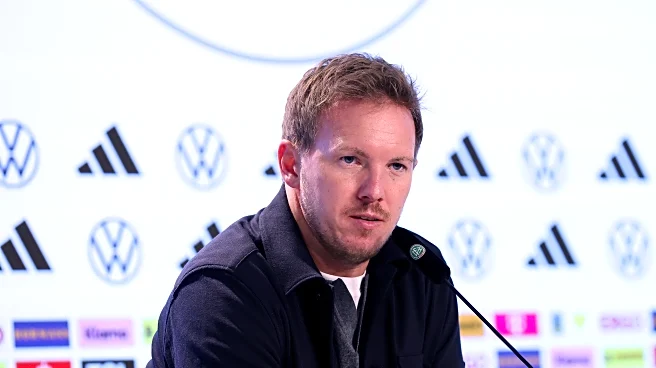What's Happening?
Researchers have discovered a new phase of ice, known as Ice XXI, during experiments with the world's largest X-ray laser at the European XFEL facility in Germany. This phase forms at room temperature under extreme pressure conditions, specifically up to 2 gigapascals, which is about 20,000 times the air pressure at sea level. Ice XXI has a unique tetragonal crystal structure with large repeating units consisting of 152 water molecules, distinguishing it from other known ice phases. The discovery was made using a diamond anvil cell to rapidly compress and decompress water, capturing the changes in crystal structure with X-rays at a rate of a million images per second. This research suggests the possibility of other unknown ice phases existing on icy moons and planets.
Why It's Important?
The discovery of Ice XXI is significant as it expands the understanding of water's behavior under different conditions, which could have implications for planetary science and the study of extraterrestrial environments. Understanding these exotic ice phases can provide insights into the conditions and processes on icy moons and planets, potentially aiding in the search for life beyond Earth. Additionally, this research could influence future studies in materials science, as the ability to manipulate water's phase transitions could lead to new applications in technology and industry.
What's Next?
The researchers plan to continue exploring the crystallization pathways of water under varying pressure and temperature conditions to uncover more unknown phases of ice. This ongoing research could lead to further discoveries that enhance the understanding of water's properties and its role in different planetary environments. The findings may also prompt other scientific teams to investigate similar phenomena, potentially leading to collaborative efforts in the field of planetary science and materials research.
Beyond the Headlines
The discovery of Ice XXI raises questions about the potential for other unknown phases of ice that could exist in extreme environments, such as those found on distant planets and moons. This could have implications for the study of climate and environmental conditions in extraterrestrial settings, influencing theories about the habitability of other worlds. Furthermore, the ability to create and study these phases in laboratory settings may lead to advancements in the development of new materials with unique properties.












